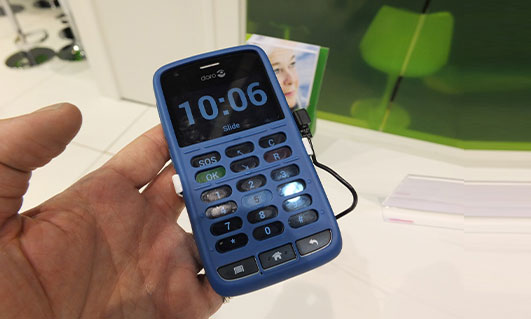
Accessibility features in smartphones and other devices
In today’s digital age, smartphones and other electronic devices have become an integral part of our daily lives. It is crucial to ensure that these devices are accessible to individuals with disabilities, enabling them to fully participate in the digital world. In this blog, we will explore the accessibility features available in smartphones and other devices that promote inclusion and empower individuals with diverse abilities.
Screen Readers:
Screen readers are a fundamental accessibility feature that provides spoken feedback to individuals with visual impairments. These tools use text-to-speech technology to audibly read out the content on the screen, enabling blind or visually impaired individuals to navigate menus, read text messages, browse websites, and use applications independently. Popular screen readers include VoiceOver for iOS devices, TalkBack for Android devices, and Narrator for Windows devices.
Voice Assistants:
Voice assistants, such as Apple’s Siri, Google Assistant, and Amazon’s Alexa, offer hands-free interaction with smartphones and other devices. These assistants provide a range of functionalities, including making calls, sending messages, setting reminders, accessing information, and controlling smart home devices. Voice assistants enhance accessibility by enabling individuals with mobility or dexterity impairments to navigate and operate devices using voice commands.
Magnification and Display Customization:
For individuals with low vision, smartphones and devices offer magnification features that enlarge on-screen content. Users can adjust the level of magnification and choose specific areas to zoom in on, making text, images, and icons more visible. Additionally, devices allow for display customization, such as adjusting font sizes, contrast levels, and color filters, catering to the specific visual needs of individuals with different types of visual impairments.
Assistive Touch and Gestures:
Assistive Touch is a feature available on smartphones that provides alternative navigation options for individuals with motor impairments. It creates virtual buttons on the screen, allowing users to perform gestures, such as swipes and pinches, without physically interacting with the device. Gesture-based controls, such as shaking or tilting the device to perform specific actions, also enhance accessibility by offering alternative ways to interact with smartphones and devices.
Closed Captioning and Subtitles:
Smartphones and multimedia devices offer closed captioning and subtitles options for videos, allowing individuals with hearing impairments to access audio content. Users can turn on captions or subtitles to read the dialogue or audio description in real-time while watching videos, movies, or participating in video calls. This accessibility feature ensures that individuals with hearing impairments can fully engage with multimedia content.
Tactile Feedback and Haptic Technology:
Tactile feedback and haptic technology provide physical feedback through vibrations, taps, or subtle movements, enhancing the user experience for individuals with visual impairments or cognitive disabilities. These features help users navigate interfaces, receive confirmation of actions, and locate virtual buttons or controls by simulating touch sensations. Tactile feedback and haptic technology make interactions with smartphones and devices more intuitive and accessible.
Conclusion:

The availability of accessibility features in smartphones and other devices has revolutionized digital accessibility, empowering individuals with disabilities to fully participate in the digital world. Through screen readers, voice assistants, magnification, display customization, assistive touch, closed captioning, and tactile feedback, these devices cater to the diverse needs of individuals with disabilities. It is essential for manufacturers, developers, and users to be aware of these features and advocate for their continued improvement to ensure inclusive technology for all. By embracing and utilizing these accessibility features, we can create a more inclusive and accessible digital environment that empowers individuals with diverse abilities to engage, communicate, and thrive in the digital era.